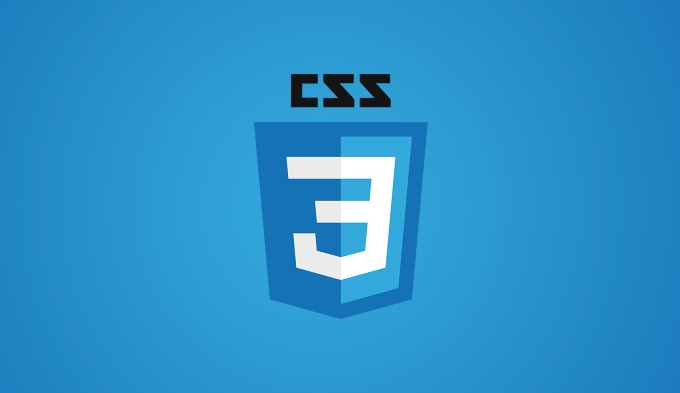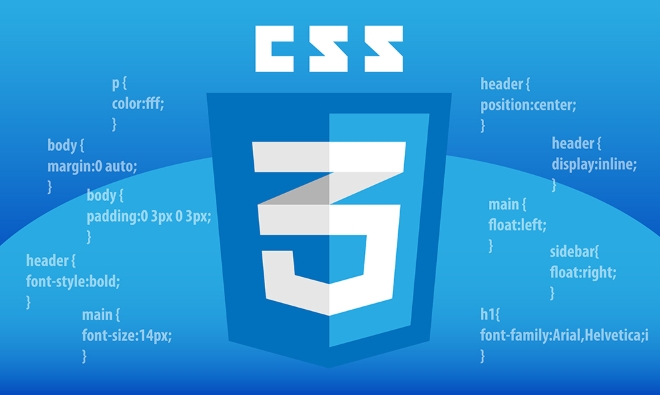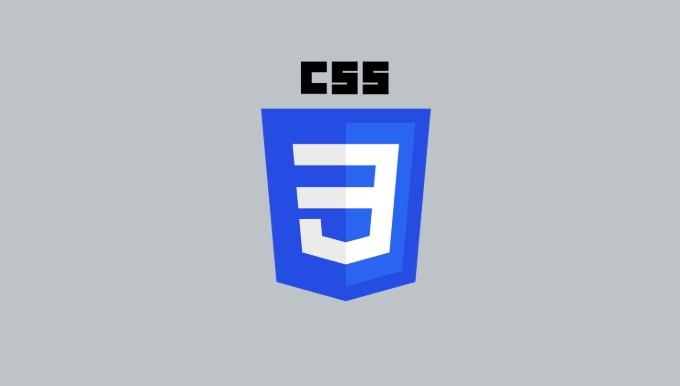Use the clip-path attribute of CSS to crop elements into custom shapes such as triangles, circular notches, polygons, etc. without relying on images or SVGs. Its advantages include: 1. Supports a variety of basic shapes such as circle, ellipse, polygon, etc.; 2. Responsive adjustment and adaptable to mobile terminals; 3. Easy to animation, and can be combined with hover or JavaScript to achieve dynamic effects; 4. It does not affect the layout flow, and only crops the display area. Common usages are such as circular clip-path: circle(50px at center) and triangle clip-path: polygon(50% 0%, 100% 100%, 0% 100%). Notes include: good compatibility but does not support old IE; complex shapes may affect performance; clip-path takes effect after transform and will not change with rotation and scaling. By dynamically modifying the clip-path value, interactive effects such as button expansion and card deformation can also be achieved.

To put it directly, the key point: Using the clip-path attribute of CSS, you can easily crop various custom shapes for elements, such as triangles, polygons, circular notches, etc., without relying on pictures or SVGs.

Why choose clip-path?
In web design, sometimes we need to make the image or background appear non-rectangular shapes. The common method used in the past was to use PNG images or SVG masks, but these methods are not flexible enough and are not easy to maintain. And clip-path provides a pure CSS solution, which:

- Supports multiple basic shapes (circle, ellipse, polygon, etc.)
- Can be responsively adjusted
- Easy to animate (although not all browsers support transitions)
- It does not affect the layout flow, it is just the "cropped" display part
How to write common shapes?
Circles and ellipses
clip-path: circle(50px at center); clip-path: ellipse(50px 30px at 20% 30%);
This type is suitable for making avatars, small icons, and other places where circular cropping is required. The parameters are the radius and the center point position respectively.
polygon polygon()
This is the most flexible and commonly used type, and can create various complex shapes such as triangles, trapezoids, and stars.

clip-path: polygon(50% 0%, 100% 100%, 0% 100%);
The above example will cut a rectangle into a triangle. The coordinates in brackets represent the positions of each vertex, and are connected in order to form a graph.
Tips: If you are not sure how to write coordinates, you can use some online tools to assist in the generation, such as Clippy .
A few notes in practical applications
- Compatibility : Mainstream browsers basically support it, but it is not compatible with the old version of IE. If the project needs to support IE, it is recommended to provide an alternative solution.
- Responsive processing : Using percentage units allows the cropping area to change with the container, suitable for mobile terminals.
- Performance Impact : Complex polygons may affect rendering performance, especially when testing with animations.
- Relationship with transform :
clip-pathtakes effect after element transformation, so if you use rotation, scaling and other effects, the crop area will not change as well.
How to create interesting interaction effects?
You can combine hover or JavaScript to dynamically change clip-path to achieve animation effects such as expansion and deformation.
For example, the effect of gradually displaying all content after hovering a button:
.button {
clip-path: polygon(0 0, 100% 0, 100% 30%, 0 30%);
transition: clip-path 0.3s ease;
}
.button:hover {
clip-path: polygon(0 0, 100% 0, 100% 100%, 0 100%);
}This will enable the visual effect of slowly "expanding" from a small strip, which is suitable for scenes such as cards, navigation menus, etc.
Basically that's it. Master the writing of several common shapes and add a little imagination, and you can use clip-path to create many interesting page effects.
The above is the detailed content of Creating custom shapes with css clip-path. For more information, please follow other related articles on the PHP Chinese website!

Hot AI Tools

Undress AI Tool
Undress images for free

Undresser.AI Undress
AI-powered app for creating realistic nude photos

AI Clothes Remover
Online AI tool for removing clothes from photos.

Clothoff.io
AI clothes remover

Video Face Swap
Swap faces in any video effortlessly with our completely free AI face swap tool!

Hot Article

Hot Tools

Notepad++7.3.1
Easy-to-use and free code editor

SublimeText3 Chinese version
Chinese version, very easy to use

Zend Studio 13.0.1
Powerful PHP integrated development environment

Dreamweaver CS6
Visual web development tools

SublimeText3 Mac version
God-level code editing software (SublimeText3)

Hot Topics
 CSS tutorial for creating loading spinners and animations
Jul 07, 2025 am 12:07 AM
CSS tutorial for creating loading spinners and animations
Jul 07, 2025 am 12:07 AM
There are three ways to create a CSS loading rotator: 1. Use the basic rotator of borders to achieve simple animation through HTML and CSS; 2. Use a custom rotator of multiple points to achieve the jump effect through different delay times; 3. Add a rotator in the button and switch classes through JavaScript to display the loading status. Each approach emphasizes the importance of design details such as color, size, accessibility and performance optimization to enhance the user experience.
 Addressing CSS Browser Compatibility issues and prefixes
Jul 07, 2025 am 01:44 AM
Addressing CSS Browser Compatibility issues and prefixes
Jul 07, 2025 am 01:44 AM
To deal with CSS browser compatibility and prefix issues, you need to understand the differences in browser support and use vendor prefixes reasonably. 1. Understand common problems such as Flexbox and Grid support, position:sticky invalid, and animation performance is different; 2. Check CanIuse confirmation feature support status; 3. Correctly use -webkit-, -moz-, -ms-, -o- and other manufacturer prefixes; 4. It is recommended to use Autoprefixer to automatically add prefixes; 5. Install PostCSS and configure browserslist to specify the target browser; 6. Automatically handle compatibility during construction; 7. Modernizr detection features can be used for old projects; 8. No need to pursue consistency of all browsers,
 Styling visited links differently with CSS
Jul 11, 2025 am 03:26 AM
Styling visited links differently with CSS
Jul 11, 2025 am 03:26 AM
Setting the style of links you have visited can improve the user experience, especially in content-intensive websites to help users navigate better. 1. Use CSS's: visited pseudo-class to define the style of the visited link, such as color changes; 2. Note that the browser only allows modification of some attributes due to privacy restrictions; 3. The color selection should be coordinated with the overall style to avoid abruptness; 4. The mobile terminal may not display this effect, and it is recommended to combine it with other visual prompts such as icon auxiliary logos.
 Creating custom shapes with css clip-path
Jul 09, 2025 am 01:29 AM
Creating custom shapes with css clip-path
Jul 09, 2025 am 01:29 AM
Use the clip-path attribute of CSS to crop elements into custom shapes, such as triangles, circular notches, polygons, etc., without relying on pictures or SVGs. Its advantages include: 1. Supports a variety of basic shapes such as circle, ellipse, polygon, etc.; 2. Responsive adjustment and adaptable to mobile terminals; 3. Easy to animation, and can be combined with hover or JavaScript to achieve dynamic effects; 4. It does not affect the layout flow, and only crops the display area. Common usages are such as circular clip-path:circle (50pxatcenter) and triangle clip-path:polygon (50%0%, 100 0%, 0 0%). Notice
 What is the difference between display: inline, display: block, and display: inline-block?
Jul 11, 2025 am 03:25 AM
What is the difference between display: inline, display: block, and display: inline-block?
Jul 11, 2025 am 03:25 AM
Themaindifferencesbetweendisplay:inline,block,andinline-blockinHTML/CSSarelayoutbehavior,spaceusage,andstylingcontrol.1.Inlineelementsflowwithtext,don’tstartonnewlines,ignorewidth/height,andonlyapplyhorizontalpadding/margins—idealforinlinetextstyling
 How to create responsive images using CSS?
Jul 15, 2025 am 01:10 AM
How to create responsive images using CSS?
Jul 15, 2025 am 01:10 AM
To create responsive images using CSS, it can be mainly achieved through the following methods: 1. Use max-width:100% and height:auto to allow the image to adapt to the container width while maintaining the proportion; 2. Use HTML's srcset and sizes attributes to intelligently load the image sources adapted to different screens; 3. Use object-fit and object-position to control image cropping and focus display. Together, these methods ensure that the images are presented clearly and beautifully on different devices.
 What is CSS and what does it stand for?
Jul 03, 2025 am 01:48 AM
What is CSS and what does it stand for?
Jul 03, 2025 am 01:48 AM
CSS,orCascadingStyleSheets,isthepartofwebdevelopmentthatcontrolsawebpage’svisualappearance,includingcolors,fonts,spacing,andlayout.Theterm“cascading”referstohowstylesareprioritized;forexample,inlinestylesoverrideexternalstyles,andspecificselectorslik
 What is the CSS Painting API?
Jul 04, 2025 am 02:16 AM
What is the CSS Painting API?
Jul 04, 2025 am 02:16 AM
TheCSSPaintingAPIenablesdynamicimagegenerationinCSSusingJavaScript.1.DeveloperscreateaPaintWorkletclasswithapaint()method.2.TheyregisteritviaregisterPaint().3.ThecustompaintfunctionisthenusedinCSSpropertieslikebackground-image.Thisallowsfordynamicvis






